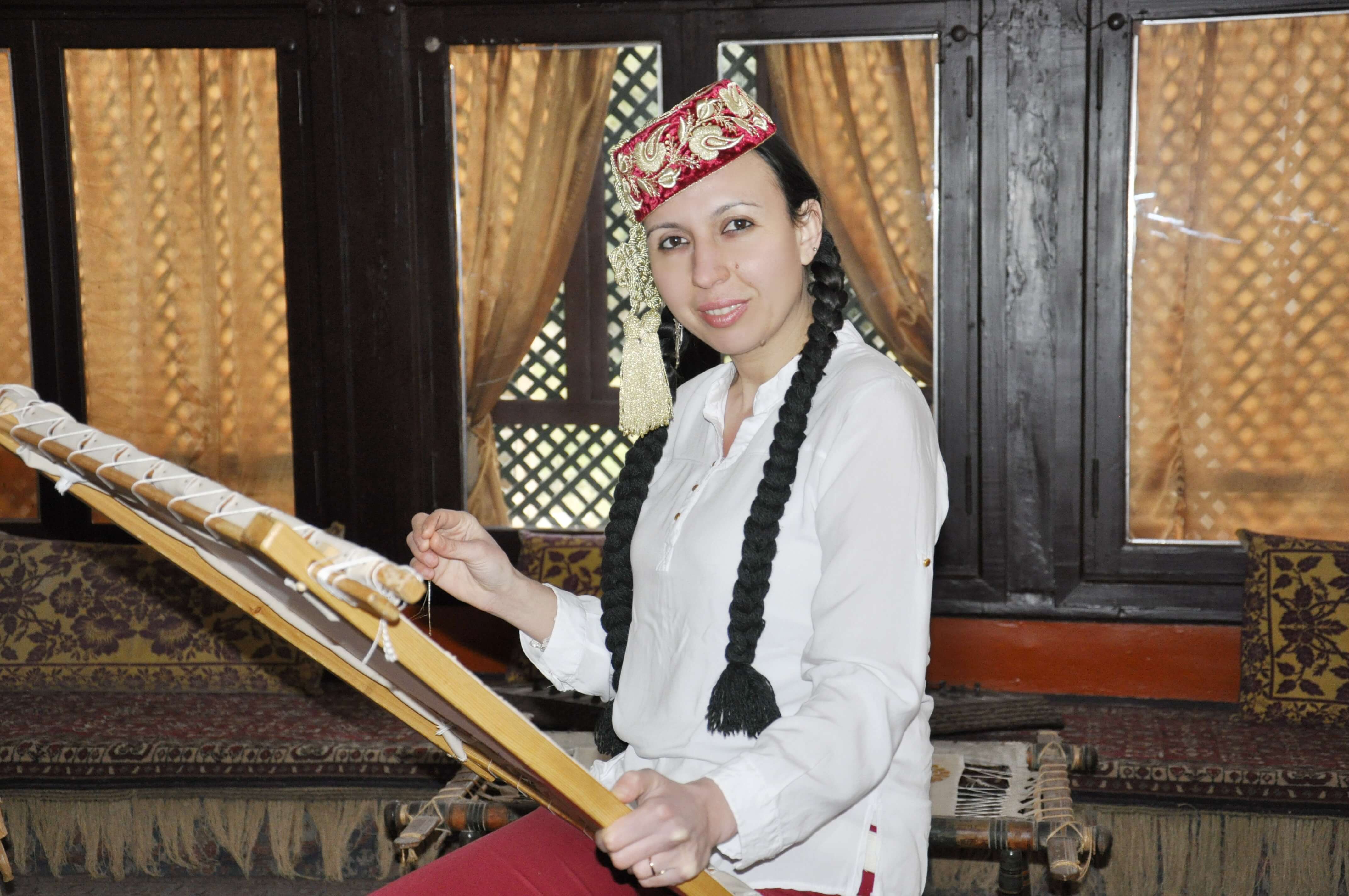Biography - Khatije Yunusova
KHATIJE YUNUSOVA
Biography
Early years, childhood
Khatije Yunusova is one of the modern Bakhchisarai craftswomen, who is engaged in the revival of the Crimean Tatar embroidery. She was born in 1981 in the city of Yangiyul, Uzbekistan. She began to do needlework at the age of 9. In 2007 she graduated from the University of Economics and Management.
Khatije Yunusova started to study Crimean Tatar national embroidery “Myklama” (gold embroidery) with Zarema Mustafayeva in 2008. She also mastered such techniques as “Telli” and “Esab Ishleme” from Elvira Osmanova. The master creates her own patterns relying on the traditions of the Crimean Tatar national art.
Process of embroidery
“In the process of embroidery, I am most attracted to the excitement and expectation of what exactly my work will turn out to be like in the end,” says the craftswoman.
On ancient women's headdresses – fez, there can often be found an attached construction “Puskul” (tassel). Khatije is the only master who recreated this element of the national costume. The technology of creation was lost, and she had to restore it using the methods of analysis and experiments.
Professional creative activity
In the art of Crimean Tatar embroidery, there is a lot that has not been researched but needs researching. In recent years, gold embroidery has revived and developed, allowing the whole world to learn about the art of Crimean Tatars.
Much credit goes to such artists as Khatije Yunusova, who is a participant of not only Ukrainian, but also international exhibitions and festivals. Her works can be found in private collections in the USA, UAE, Poland, Romania, Turkey, Russia, Belarus, Uzbekistan and Dagestan.
Embroideress’s works
1. Kurankap - a case for the holy book.
2. Fes – a Crimean-Tatar woman’s headdress. Made in the "bukme" technique - lace sewing.
3. Marama – a Crimean-Tatar woman’s head cover. Made using the "Tatar ishleme" technique - double-sided flat satin stitch.
4. Fes and cuffs (yen kapaklar) - a set, a woman's headdress and cuffs to the sleeves of the dress. Made in the " boyunjak ishi" technique - beadwork.













